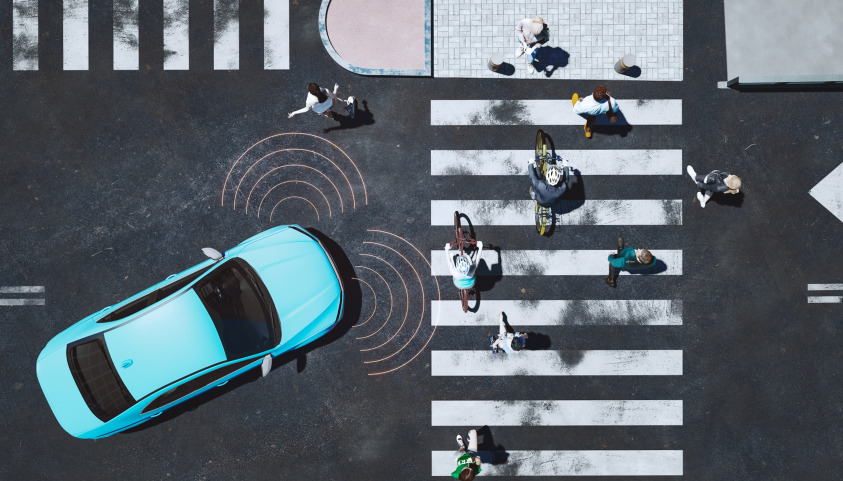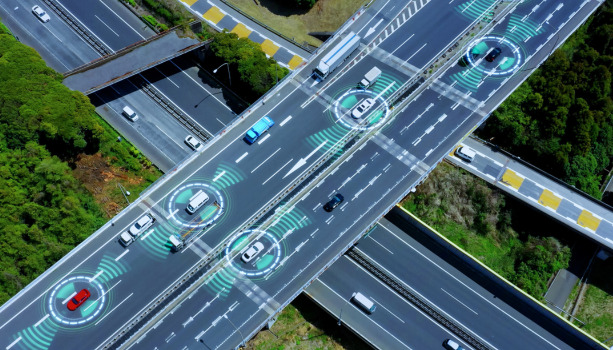In 2020, the US Department of Transportation (DOT)’s National Highway Traffic Safety Administration (NHTSA) designated October as National Pedestrian Safety Month, celebrating the right to safety for every user of the road. The goal is to raise public awareness and strengthen efforts on improving road safety, with an emphasis on protecting vulnerable road users (VRU). VRUs include any road user that is not protected by a metal frame, such as pedestrians, cyclists, and motorcyclists.
The Current Stance of Road Safety
According to the latest statistics published by the World Health Organization (WHO), an estimated 1.3 million people across the globe die every year from road traffic incidents, with another 20 to 50 million people suffering non-fatal injuries, many of which lead to permanent disabilities.
The good news is that in most of the developed world, the number of road fatalities has seen a steady decrease over time. This pattern is especially salient in Europe; the road fatality figure of the European Union has more than halved from 51,400 deaths recorded in 2001 to 19,800 deaths in 2021. Based on the trajectory, the EU is targeting less than 11,400 annual deaths by 2030.
Beyond Europe, a similar downward trend can be seen in other developed countries like Japan, Canada, Korea, and Australia. In fact, the United States is the only country among advanced economies where road fatality saw an increase over the past decade.
This leads us to the bad news. Unfortunately—just like the United States—many parts of the world are not seeing a decrease in road fatality, meaning that the world is becoming increasingly polarized in terms of road safety. Today, 93% of the world’s road fatalities happen in less developed countries. By working with the above figures, it can be derived that road fatality in the EU only accounts for 1.5% of the global figure, despite its population representing 5.6% of world population.
Reasons for Road Traffic Accidents
To improve road safety, the best measure is to tackle the causes of traffic accidents and prevent them in the first place. To most daily drivers, operating a vehicle can feel like a subconscious task. Despite so, driving requires an intensive amount of data processing in the subconscious mind, with countless perception-judgment cycles happening every minute. One error in any of the two processes can lead to dangerous situations and potential accidents.
As expected, most errors leading to accidents are human mistakes or flaws. For instance, errors in perception can occur under low visibility, often a result of poor weather conditions or complicated terrain. Perception errors can also be caused by a lack of attention on the road due to smartphone distraction or mental stress. Similarly, judgment errors can be caused by sleep deprivation or alcohol consumption.
Oftentimes, a fatal crash isn’t the result of a driver’s error, but an error made by a vulnerable road user. For instance, a lot of road fatalities are the result of pedestrians and cyclists disobeying signals. Hence, improving road safety requires collective efforts from all road users.
Efforts to Reduce Road Traffic Accidents
By studying the potential reasons and scenarios that could result in traffic accidents, the transportation sector and the automotive industry have made a lot of preventative and protective efforts. Thanks to these efforts, many countries have managed to reduce road fatality at a steady rate.
The most significant effort is the adoption of Advanced Driver Assistance Systems (ADAS) in newer vehicles. Features like blind spot detection, lane keep assist, collision alert, and emergency braking have contributed to a great reduction in crashes. In recent years, OEMs and ADAS suppliers have further strengthened the capability of sensor and AI-based object recognition technologies to achieve a driving automation level of L2 and up to L3. Tesla’s Autopilot is one of the most marketed examples.
Other preventative measures have also been made, such as enforcing lower speed limits, increasing penalties for traffic law violations, and more spending on educating road safety to the public. Conventional protective measures have also seen great improvements, with safer airbags and vehicle structures that are better capable of absorbing crash energy.
Why Are These Efforts Not Enough?
Although ADAS adoption has demonstrated great results in reducing traffic accidents, its influence is limited to more advanced economies. Since the cost of ADAS is mostly distributed to end consumers, most consumers in low- and mid-income economies may find it too expensive to purchase a new vehicle with all the ADAS features. This explains why most of the reduction in road fatality was observed in high-income economies.
Besides being expensive, sensors have their limitations. Regardless of the amount of machine learning fed into the algorithm, in the end, sensors are just like the human eye, which must see and identify an object before making judgments. This makes sensors prone to distortion and blind spots.
Then what else can we do to achieve zero road fatality? Perhaps we can take a look at the commercial aviation industry, which has achieved zero fatality almost every year throughout the past decade. Of course, comparing road traffic with air traffic is comparing apples to oranges. Still, one thing we can learn from air traffic coordination is that it does not rely on visibility. Decisions and flight paths are determined through wireless communication.
Why Is V2X the Ultimate Answer to Achieving Zero Road Fatality?
Wireless communication for road traffic is called V2X (Vehicle-to-Everything) communication. This allows vehicles to seamlessly communicate with surrounding vehicles, road infrastructures, and even the handheld devices of vulnerable road users, to ensure that every participant on the road can receive real-time warnings and seamlessly cooperate through what is referred to as cooperative autonomous driving.
To enable V2X connectivity, a vehicle needs to be equipped with an onboard unit (OBU), while a roadside unit (RSU) needs to be installed into every relevant road infrastructure. Smartphones are also readily available V2X connectivity units, allowing vulnerable road users carrying smartphones to enroll in the V2X ecosystem. In general, V2X connectivity units are cheaper to install and deploy than ADAS, and their long-term maintenance costs are also lower.
In the short run, V2X is a great complementary measure to ADAS. Although equipping all road users and infrastructures with V2X may take decades, municipalities can begin by installing RSUs in areas with frequent accidents and areas dangerous to pedestrian safety.
By seeing the invisible and communicating information based on facts, V2X will be the ultimate answer to zero road fatality.
As an automotive cybersecurity and mobility solutions provider, AUTOCRYPT plays a crucial role in securing V2X communications. Its V2X solution is readily installable onto OBU/RSUs, consisting of a secure communication module, a PKI backend, an Integrated Management System for SCMS, along with a root CA service for the V2X-PKI ecosystem.
To learn more about AUTOCRYPT’s V2X security offerings, contact global@autocrypt.io.
To stay informed and updated on the latest news about AUTOCRYPT and mobility tech, subscribe to AUTOCRYPT’s quarterly newsletter.



